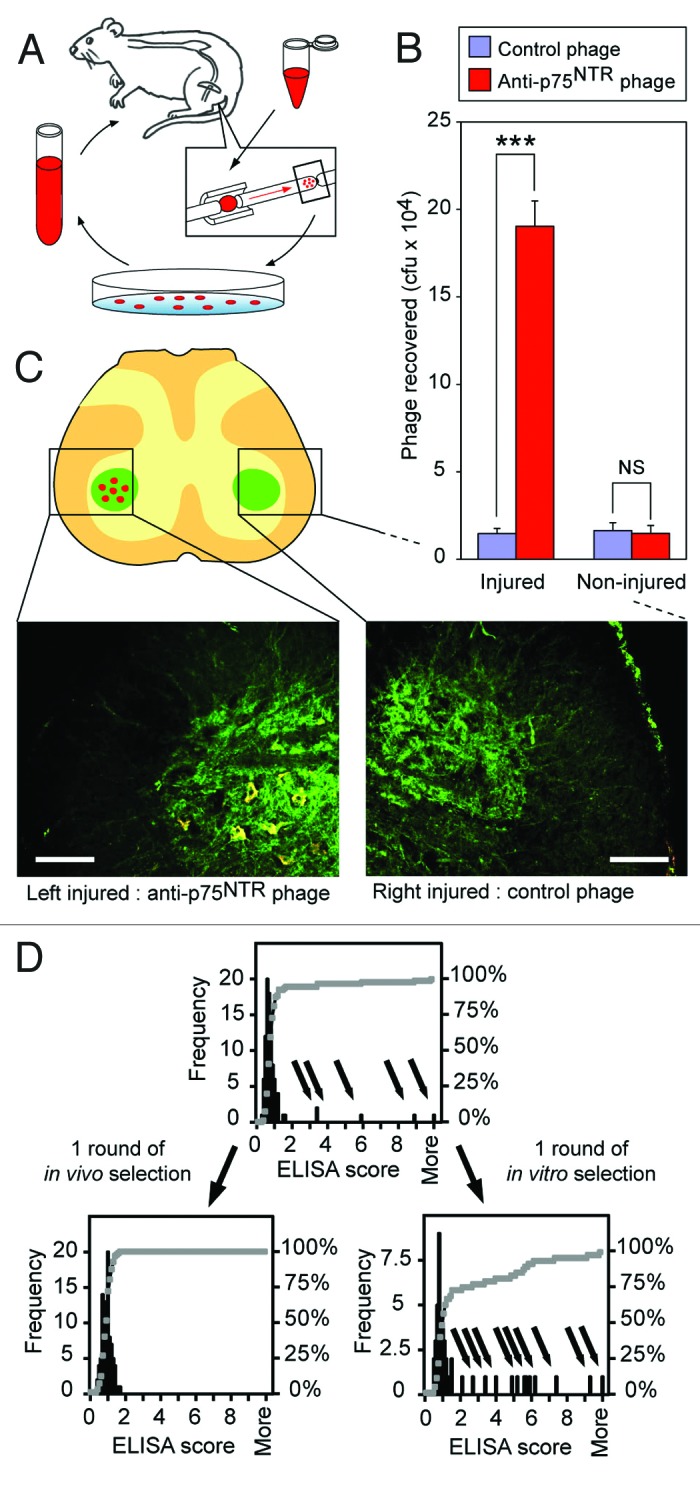
Figure 2. Isolating p75NTR antibodies by neuronal retrograde transport in vivo. (A) The in vivo selection procedure. Phage library enriched for binding to p75NTR from one round of in vitro panning was applied to the rat sciatic nerve in vivo at 5 x 1010 cfu. Phage was recovered 18 h later and used to infect E.coli for titer. The phage was then amplified for further rounds of in vivo selections (optional) or for sequence analysis. (B) Nerve pre-injury increases recovery of anti-p75NTR phage. Phage recovered from nerve ligation 18 h after applying either WT phage (blue columns) or phage enriched for anti-p75NTR by one round of in vitro panning (red columns) to either uninjured sciatic nerve or sciatic nerve injured 7 d earlier by ligation. Phage recovery increased 13-fold by nerve pre-injury: ***p < 0.001 Student’s t-test; NS, not significant; n = 3; cfu, colony forming units. (C) In vivo-selected anti-p75NTR phage are transported to the cell bodies in the spinal cord. Anti-p75NTR phage isolated from first round in vivo screening was reapplied to the injured sciatic nerve without blocking ligation. Twenty-four hours later phage co-localized on the cell bodies of p75NTR expressing neurons. Control phage applied to the contralateral side also with induced injury showed no visible accumulation. p75NTR expression is detected in green, phage as red, co-localization is visualized as yellow. Scale bar 150µm. (D) Anti-p75NTR scFv with high ELISA scores are not internalized in vivo. ELISA scores of a sample of 96 phage clones enriched for anti-p75NTR by one round of in vitro panning, and after either a further in vitro panning round or one round of in vivo phage selection. Note the absence of clones with high ELISA scores (arrows) after a single round of in vivo phage selection.
